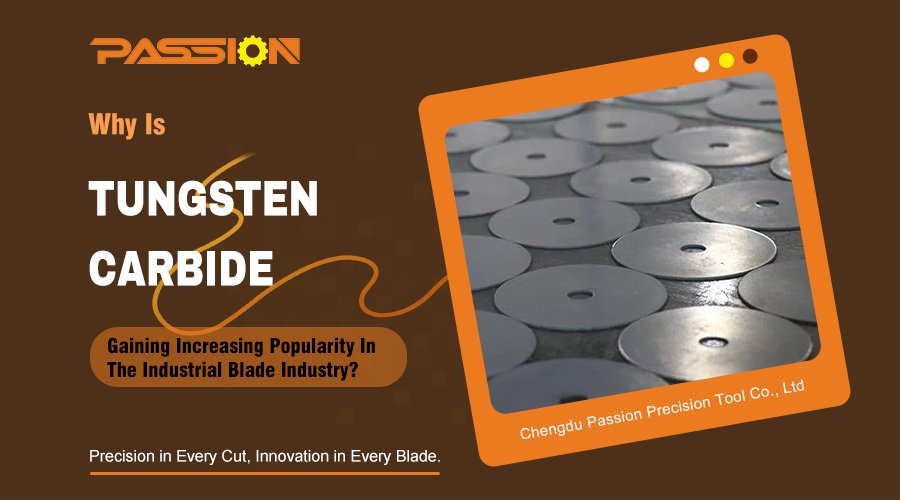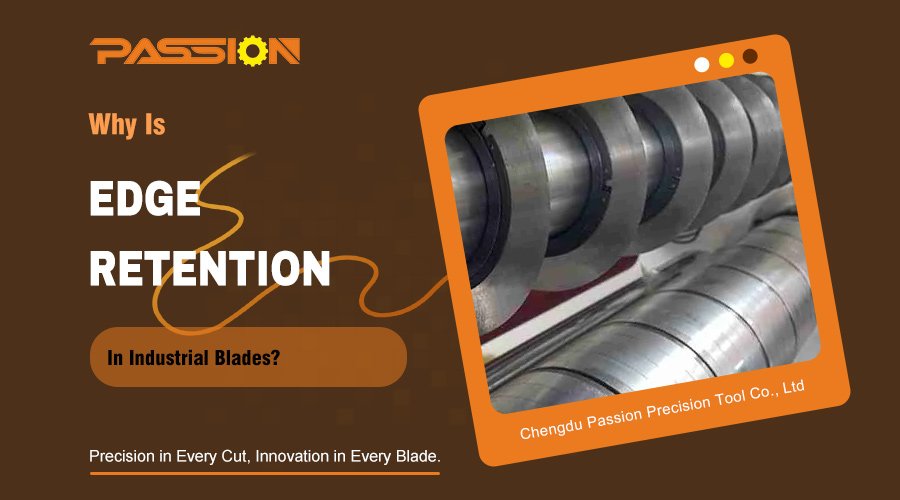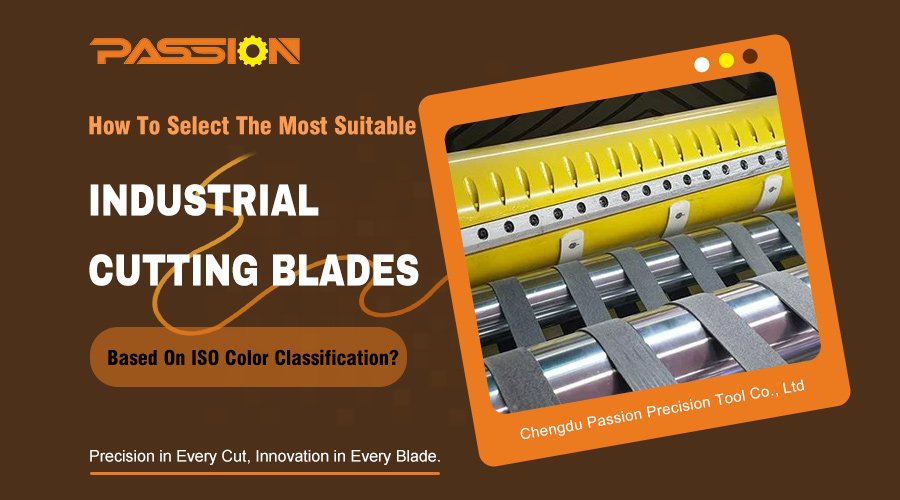Welding tungsten carbide poses unique challenges due to its extreme hardness and composite structure. In industries requiring high durability and precision, the ability to effectively join tungsten carbide can significantly expand its applications, especially for industrial blades and cutting tools. Let’s explore if and how it’s possible to weld tungsten carbide.
Due to tungsten carbide’s brittle nature and composite structure (consisting of cobalt-bound tungsten carbide particles), conventional soldering methods are usually unable to weld tungsten carbide. However, brazing with high-silver solder, induction brazing, and specialized welding techniques, such as laser welding, can effectively join tungsten carbide to other materials. These methods allow tungsten carbide to be applied in high-wear industrial settings, such as rewinder bed knives and slitter blades, where durability and strength are crucial.
Despite the challenges, welding tungsten carbide can be achieved with specialized techniques, opening new possibilities for high-strength applications in industries like paper manufacturing, metalworking, and industrial cutting.
What Makes Tungsten Carbide Difficult To Weld?
Tungsten carbide, known for its superior hardness and resistance to wear, is a composite material that combines tungsten carbide particles with a cobalt binder. This composition is beneficial for durability but problematic for traditional welding due to several factors:
High Brittleness: Tungsten carbide’s hardness makes it prone to cracking or shattering under the thermal stresses of conventional welding methods.
Differential Thermal Expansion: Cobalt, the binder material, has a different thermal expansion rate than tungsten carbide. When heated, this mismatch can lead to cracking or separation of the carbide particles.
High Thermal Conductivity: Tungsten carbide conducts heat rapidly, meaning that localized heating often dissipates quickly, making it challenging to create a weld that maintains the material’s integrity.
These properties make tungsten carbide unsuited for traditional welding, prompting the use of specialized methods such as brazing, laser welding, and vacuum brazing, which apply heat in controlled ways to avoid thermal damage.
Welding Methods for Tungsten Carbide
Brazing
Brazing is one of the most common and effective ways to join tungsten carbide to other metals, particularly steel. High-silver content solders are frequently used in brazing tungsten carbide, as they provide a strong bond that resists the material’s brittleness and thermal expansion issues.
Process: Brazing involves using a filler metal (typically with high silver content) with a melting point lower than that of tungsten carbide and the base metal. The brazing material flows into the joint between the carbide and the base metal, forming a strong bond as it cools.
Applications: Brazing is often used in the manufacture of industrial blades and cutting tools that require high durability and precision.
Laser Welding
Laser welding is a precision-focused method suitable for joining small tungsten carbide components or for cases requiring minimal thermal distortion.
Process: Laser welding uses concentrated laser energy to fuse tungsten carbide with other metals. This highly controlled heat source allows precise bonding with minimal heat impact on surrounding materials.
Applications: Laser welding is ideal for creating small, strong joints in applications where precision is essential, such as in industrial knives and fine-edged tools.
Vacuum Brazing
Vacuum brazing takes place in a controlled, oxygen-free environment, reducing the risk of oxidation and contamination, which can weaken the bond.
Process: The tungsten carbide and base material are placed in a vacuum furnace with a brazing alloy, which melts and bonds the two materials in a vacuum environment. This process ensures a clean bond with minimal risk of defects.
Applications: Vacuum brazing is commonly used in high-precision tooling and high-performance cutting blades where clean and reliable joints are necessary.
Sintered Brazing
Sintered brazing combines heat and pressure to join tungsten carbide with other metals in an extremely robust bond.
Process: In this method, tungsten carbide and the base metal are pressed together while subjected to high heat. The pressure and temperature cause the materials to bond at a molecular level, creating a very durable joint.
Applications: Sintered brazing is highly effective in producing industrial cutting tools, especially where high durability is essential, such as in heavy machinery parts and industrial blades.
Joining Tungsten Carbide To Steel
Joining tungsten carbide to steel is crucial for many industrial applications, as steel is often used as a base material due to its strength, workability, and cost-effectiveness. However, the welding of steel to tungsten carbide requires specific techniques due to the difference in material properties.
Brazing and Induction Methods: The most common and effective way to join steel and tungsten carbide is through brazing. In induction brazing, an electromagnetic field generates heat, which flows through the materials, creating a strong bond that holds well in high-stress environments.
Typical Uses: Tungsten carbide joined to steel is common in industrial knives, slitter blades, and other cutting tools, where both durability and affordability are prioritized.
Challenges Of Welding Tungsten Carbide
Welding tungsten carbide involves several challenges due to its material properties:
Cracking and Fracturing: Due to its high hardness, tungsten carbide is prone to cracking under rapid temperature changes. This makes it unsuitable for traditional welding techniques that involve high heat.
Heat Sinking: Tungsten carbide’s high thermal conductivity means it can quickly dissipate heat, which complicates welding and can make it difficult to achieve the necessary temperature for bonding.
Thermal Expansion Mismatch: The thermal expansion mismatch between tungsten carbide and other metals, particularly steel, can lead to stress and cracking in the joint area. This is why brazing, which applies heat more gradually, is often preferred.
Benefits Of Weldable Tungsten Carbide In Industrial Applications
When tungsten carbide is joined effectively, it offers outstanding wear resistance and durability, making it valuable for high-stress and high-wear industrial applications.
Industrial Blades and Knives: Tungsten carbide’s hardness and sharpness retention make it an excellent material for industrial blades, particularly in applications like bed knives and slitter blades.
Wear-Resistant Parts: Tungsten carbide is ideal for components that undergo constant friction and wear, such as machine parts in metalworking or high-performance cutting tools.
Cost Efficiency: Using tungsten carbide only on the cutting edge and joining it to a steel base allows manufacturers to produce cost-effective yet high-performing cutting tools. Brazing reduces costs compared to creating full-carbide parts, which can be more expensive.
Specific Industry Applications
Rewinder Bed knives
In industries involving material winding, such as paper and textiles, bed knives with tungsten carbide edges provide a sharp, durable edge that requires less maintenance than other materials. These knives hold their sharpness longer, leading to fewer interruptions and smoother operations.
Slitter Blades In Metal And Paper Industries
Slitter blades are used to cut materials in high-speed operations, often in challenging environments where heat and wear resistance are essential. Tungsten carbide’s durability makes it an excellent choice for these blades, as it withstands the wear of continuous cutting.
Tooling For Precision Cutting
In industries such as packaging and material converting, precise cutting is critical. Tungsten carbide’s ability to maintain a sharp edge allows for clean, accurate cuts, improving productivity and reducing waste.
Welding tungsten carbide requires specialized techniques but opens up significant applications in wear-resistant tools and industrial blades. With methods like brazing and laser welding, manufacturers can produce durable and high-performing cutting tools, ideal for clients needing reliable, long-lasting performance.






